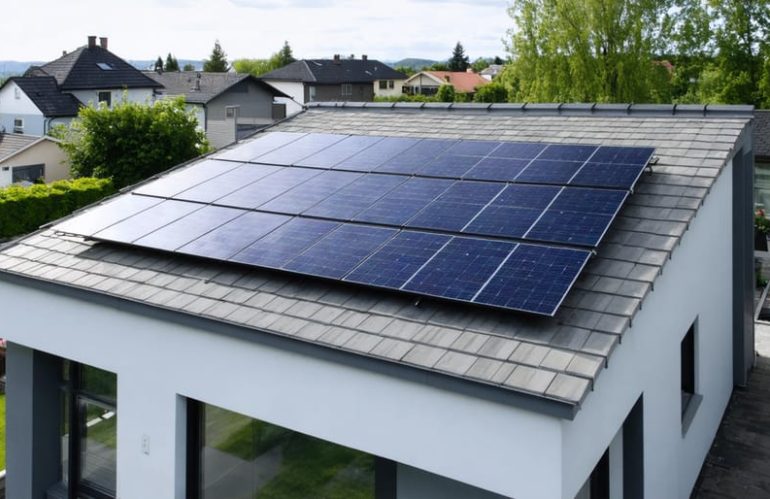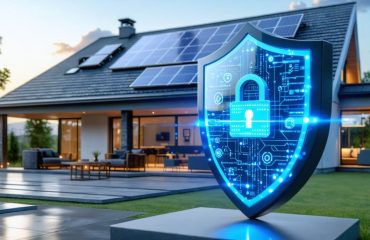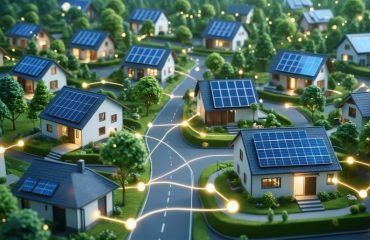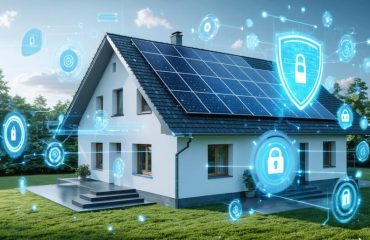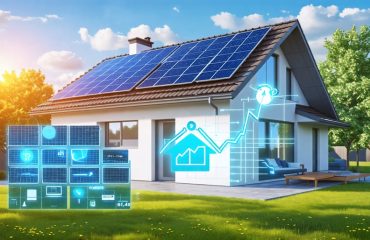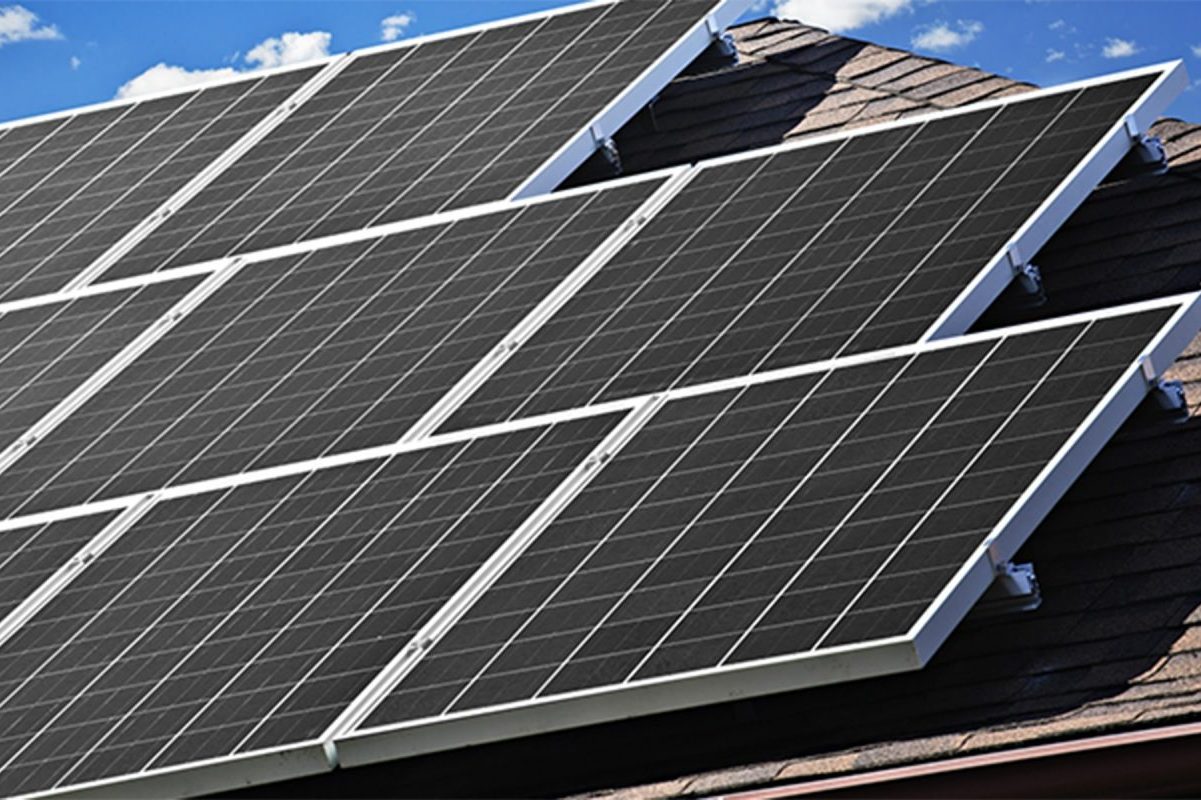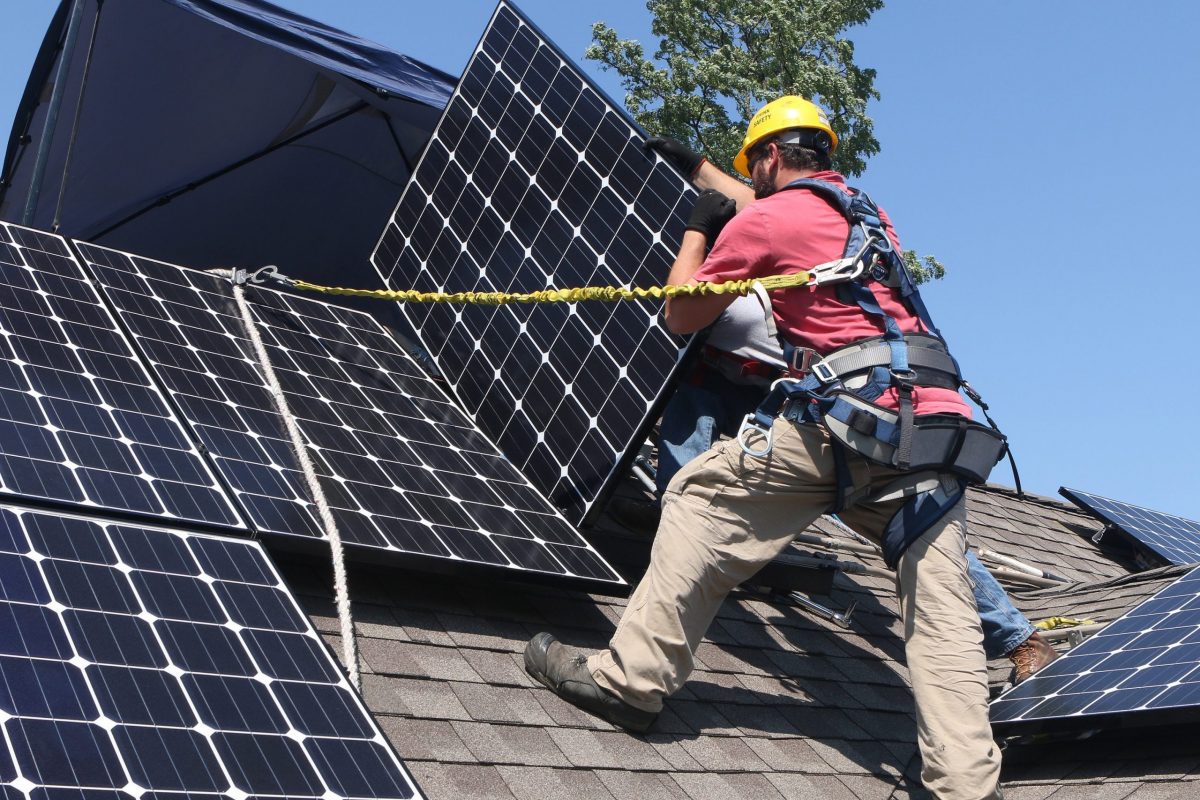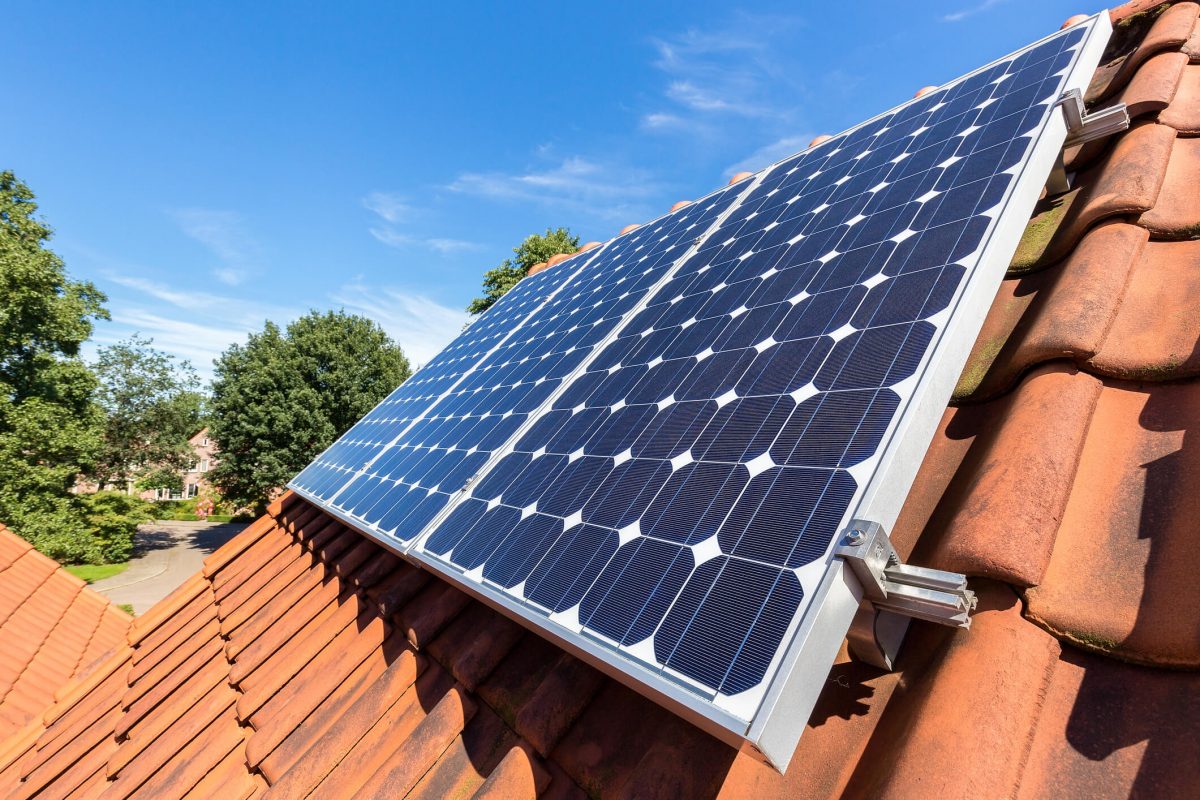Imagine powering your entire neighborhood during a blackout, or slashing your energy bills by up to 60% while protecting the environment. Microgrid energy storage systems are revolutionizing how communities handle power, combining solar panels, batteries, and smart technology to create resilient, self-sustaining energy networks. These innovative systems work like a neighborhood-sized power bank, storing excess solar energy during sunny days and distributing it precisely when needed – whether during peak usage hours, emergencies, or cloudy periods.
As energy costs continue to rise and climate concerns grow, microgrids with integrated storage solutions offer a practical path toward energy independence and sustainability. They provide the missing link between intermittent renewable energy sources and reliable, 24/7 power availability. By intelligently managing stored energy, these systems can power homes, businesses, and essential services while reducing dependence on the traditional power grid.
For homeowners and communities considering sustainable energy solutions, microgrid storage represents more than just backup power – it’s an investment in energy security, cost savings, and environmental stewardship. This technology transforms how we think about power distribution, making clean energy more accessible and reliable than ever before.
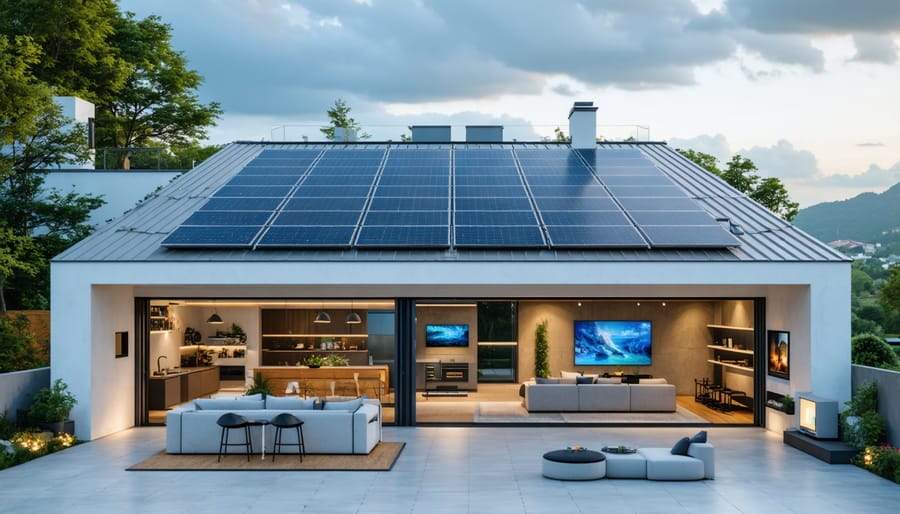
Why Microgrid Storage Matters for Your Home
Energy Independence at Your Fingertips
Imagine never having to worry about power outages or grid failures again. With microgrid energy storage systems, true energy independence is within reach. These innovative systems act like your home’s personal power station, seamlessly taking over when the main grid goes down.
During blackouts, your microgrid automatically disconnects from the utility grid and powers your home using stored energy from your battery system. Whether it’s a storm, equipment failure, or routine maintenance causing the outage, your lights stay on, your refrigerator keeps running, and your home remains comfortable.
The beauty of microgrids lies in their intelligent power management. They continuously monitor your energy consumption and generation, automatically switching between stored power and grid electricity to optimize costs. This means you’re not just protecting against outages – you’re also reducing your monthly energy bills by using stored solar power during peak rate hours.
Best of all, modern microgrid systems are surprisingly user-friendly. With smart home integration and mobile apps, you can monitor and control your power usage right from your smartphone, giving you complete control over your home’s energy destiny.
Smart Savings with Peak Load Management
Peak load management through microgrid energy storage is a smart way to cut your energy bills while maintaining reliable power. The concept is simple: store energy when it’s cheap and abundant, then use it during peak hours when electricity rates are highest. This strategy works particularly well with time-of-use pricing plans offered by many utility companies.
By charging your batteries during off-peak hours (typically overnight) and using stored energy during peak periods (usually late afternoon and early evening), you can significantly reduce your electricity costs. Think of it as buying groceries in bulk when they’re on sale, rather than paying premium prices when demand is high.
Your microgrid system can automatically switch to stored power during these expensive peak periods, helping you avoid the highest utility rates. Many homeowners report saving 30-50% on their monthly energy bills through strategic energy storage and usage. Plus, this smart management approach reduces strain on the main power grid during high-demand periods, contributing to a more stable and sustainable energy system for everyone.
Key Components of Home Microgrid Storage
Battery Systems and Their Role
Modern home battery storage systems serve as the backbone of microgrid installations, offering reliable power storage and distribution capabilities. The most common type is lithium-ion batteries, which have become popular due to their excellent performance, long lifespan, and decreasing costs. These batteries efficiently store excess solar power during sunny days and provide it when needed, especially during nighttime or cloudy weather.
Another emerging option is flow batteries, which are ideal for larger installations and offer the advantage of independent scaling of power and energy capacity. While less common in residential settings, they’re gaining traction in community microgrids due to their longer operational life and ability to maintain consistent performance over time.
Lead-acid batteries, though older technology, still play a role in some microgrid systems, particularly when budget constraints are a primary concern. While they have a shorter lifespan than newer alternatives, they’re reliable and well-understood.
The primary functions of these battery systems include load shifting (using stored energy during peak rate periods), backup power during outages, and maximizing self-consumption of solar energy. They also help stabilize the microgrid by managing voltage and frequency fluctuations, ensuring smooth operation of all connected devices and appliances.
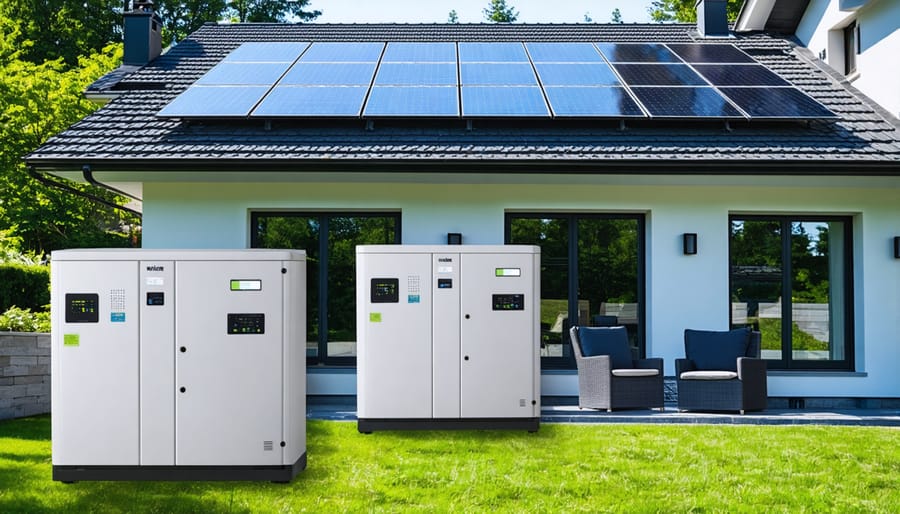
Smart Controllers and Management Systems
Smart controllers are the brains behind efficient microgrid energy storage systems, working like a sophisticated home energy manager that ensures you get the most out of your stored power. These intelligent systems continuously monitor energy production, storage levels, and household consumption patterns to make real-time decisions about when to store or use power.
Think of these controllers as energy traffic directors, determining whether to send solar power directly to your home, store it in batteries for later use, or even sell excess energy back to the grid. They can automatically switch between power sources based on factors like time of day, electricity rates, and weather conditions, helping you maximize savings on your energy bills.
Many modern controllers come with user-friendly smartphone apps that let you track your energy usage and storage levels. You can see exactly how much power you’re producing, storing, and using at any given time. Some systems even use artificial intelligence to learn your household’s energy patterns and adjust accordingly, becoming more efficient over time.
These management systems also provide important safety features, protecting your batteries from overcharging and ensuring stable power delivery to your home. During power outages, they seamlessly switch to stored power, keeping your essential appliances running without interruption.
Integration with Solar Panel Systems
Maximizing Solar Energy Collection
To maximize solar energy collection, proper panel placement and orientation are essential. South-facing panels typically generate the most power in North America, with a tilt angle matching your latitude. Regular cleaning and maintenance ensure optimal performance, while smart monitoring systems help track energy production and identify potential issues early.
Modern solar tracking systems can boost energy collection by up to 25% by following the sun’s path throughout the day. These systems, while initially more expensive, often pay for themselves through increased energy production. Strategic panel spacing prevents shading issues, and upgrading to high-efficiency panels can significantly improve energy yield per square foot.
Seasonal adjustments also play a crucial role. During winter months, a steeper panel angle helps capture more sunlight, while a flatter angle works better in summer. Many homeowners pair their solar arrays with smart energy management systems that automatically distribute power between immediate use, battery storage, and grid export based on real-time consumption patterns. This intelligent approach ensures no collected energy goes to waste and maximizes your system’s financial benefits.
Seamless Power Transitions
One of the most impressive features of microgrid energy storage is its ability to switch power sources instantly and automatically. When your main power supply experiences an interruption, the system seamlessly transitions to stored energy without any noticeable difference in your home’s power delivery. This happens in milliseconds – so quick that your lights won’t even flicker.
Think of it as having a backup generator that kicks in automatically, but without the noise, fuel, or waiting time. The system constantly monitors power quality and availability, making split-second decisions about when to draw from the grid, your solar panels, or stored energy. This intelligent switching ensures your essential appliances and devices stay running without interruption.
During power outages, when your neighbors might be in the dark, your home can continue operating normally using stored energy. The system also optimizes power distribution during normal operation, choosing the most cost-effective source at any given time – whether that’s solar power during sunny days, stored energy during peak rate hours, or grid power when it’s most affordable.
This reliable power continuity is especially valuable for homes with medical equipment, home offices, or sensitive electronics that require constant, stable power.
Real Benefits for Real Homeowners
Cost Savings in Action
Real-world implementations of microgrid energy storage systems have demonstrated impressive cost savings for homeowners and communities. Take the case of Santa Rita, California, where a residential community implementing microgrid storage reported an average reduction of 30% in their monthly energy bills within the first year of installation.
In Massachusetts, the Sterling Municipal Light Department achieved remarkable results with their microgrid system, saving ratepayers over $400,000 annually through peak shaving and demand charge reduction. The system paid for itself in just over two years, exceeding initial projections.
Homeowners using microgrid storage systems frequently report savings between $150-300 monthly during peak summer months when grid electricity costs are highest. These savings come from the ability to store excess solar energy during the day and use it during expensive peak evening hours.
A Colorado neighborhood collective saw their winter heating costs drop by 40% after installing a shared microgrid system. The community not only reduced their carbon footprint but also created a more resilient power supply during severe weather events, all while saving significantly on energy costs.
These success stories demonstrate how microgrid storage systems can deliver tangible financial benefits while supporting sustainable energy goals.

Environmental Impact
Microgrid energy storage systems offer substantial environmental benefits by reducing our dependence on fossil fuels and supporting the wider adoption of renewable energy. By storing excess solar and wind power for later use, these systems help maximize clean energy utilization and minimize waste, significantly lowering greenhouse gas emissions.
When communities implement microgrid storage, they reduce the need for environmentally harmful “peaker plants” – power stations that run only during high demand periods. These systems also decrease transmission losses by generating and storing power closer to where it’s needed, making the entire energy distribution process more efficient.
The environmental impact extends beyond emissions reduction. Microgrids help prevent habitat disruption by reducing the need for new power plant construction and transmission lines. They also support water conservation, as traditional power plants require significant water for cooling, while storage-based systems don’t.
For homeowners with solar panels, adding storage capabilities means capturing more renewable energy that would otherwise go unused. This increased efficiency translates to fewer carbon emissions and a smaller environmental footprint. As more neighborhoods adopt microgrid storage solutions, the collective environmental benefit grows, contributing to cleaner air, reduced pollution, and a more sustainable energy future.
Microgrid energy storage represents a significant step forward in our journey toward energy independence and sustainability. By combining renewable energy sources with smart storage solutions, homeowners can take control of their energy future while contributing to a cleaner environment. The benefits are clear: reduced utility bills, enhanced energy reliability, and a smaller carbon footprint.
As we’ve explored throughout this article, modern storage systems are becoming more affordable and efficient, making them an increasingly attractive option for homeowners. The technology continues to evolve, offering better performance and greater flexibility in how we manage our energy needs. When combined with solar panels and smart home technology, these systems create a powerful solution for sustainable living.
The time to act is now. With federal and state incentives available, plus declining equipment costs, investing in microgrid storage has never been more accessible. Whether you’re looking to protect your home from power outages, reduce your monthly expenses, or minimize your environmental impact, microgrid storage offers a practical solution.
Consider taking the first step by consulting with local energy professionals who can assess your specific needs and design a system that works for your home. Remember, every household that adopts this technology contributes to a more resilient and sustainable energy future. By embracing microgrid storage today, you’re not just investing in your home – you’re investing in our planet’s future.

